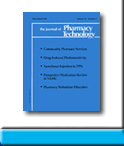 |
 |
TMP/SMX DOSAGE
ADJUSTMENT IN A RENALLY IMPAIRED PATIENT WITH PRESUMED TRIMETHOPRIM-INDUCED SCr
ELEVATIONS
Margery M Fellenzer, Edward G Timm, and
Laurie L Briceland
To request full article click here.
OBJECTIVE: To report a case of drug-induced elevated serum creatinine (SCr) concentrations in a renally impaired patient treated with trimethoprim/sulfamethoxazole (TMP/SMX) for presumed Pneumocystis carinii pneumonia (PCP), and to discuss important dosage adjustment considerations.
CASE SUMMARY: A patient with steroid-dependent glomerulonephritis was admitted with subarachnoid hemorrhage; on day 17 he developed pneumonia of uncertain origin. He was treated empirically with ampicillin/sulbactam for two days, followed by two doses of oxacillin for Staphylococcus aureus isolated from sputum. On day 20, based on a subsequent sputum culture showing no organisms, the patient's immunocompromised status, and the patient's deteriorating clinical state, oxacillin was discontinued, and erythromycin and TMP/SMX 15 mg/kg/d were initiated for empiric treatment of atypical pneumonia and PCP. On day 22, his SCr had increased to 2.2 mg/dL from a baseline value of 1.4 mg/dL. Estimated creatinine clearance was <30 mL/min, prompting a dosage reduction of TMP/SMX to 8 mg/kg/d, after which the SCr concentration decreased. On the basis of results of an open-lung biopsy, PCP was ruled out, and TMP/SMX was discontinued on day 25. Four days later, the patient's SCr returned to its baseline value.
DISCUSSION: TMP/SMX was used at a dosage of approximately 15 mg/kg/d. When the patient's SCr rose to 2.2 mg/dL, dosage adjustment of TMP/SMX to 8 mg/kg/d was based on the patient's estimated creatinine clearance. However, trimethoprim has been reported to cause elevations in SCr by inhibiting tubular secretion of creatinine, without affecting glomerular filtration rate. This potential elevation in creatinine confounds the clinician's ability to estimate renal function and must be considered when making dosage adjustments based on creatinine clearance. After the TMP/SMX dosage reduction, a trimethoprim-induced elevation in SCr was suspected on the basis of a temporary rise in creatinine in relation to TMP/SMX dosing. Thus, the reduced TMP/SMX dosage may have provided subtherapeutic serum concentrations in the presumed PCP case. However, more careful examination revealed that the rise in creatinine was most likely induced by multifactorial causes as opposed to being induced solely by trimethoprim. A combination of ischemic events caused by hypoperfusion due to hypovolemia and a significant drop in blood pressure, coupled with the addition of trimethoprim, were most likely responsible for the rise in SCr in this patient.
CONCLUSIONS: The potential of trimethoprim to cause an elevation in SCr, especially in patients with chronic renal insufficiency, must be considered when making dosage adjustments in patients with SCr elevations who are taking TMP/SMX. Further investigation of other potential causes of renal failure, such as hypoperfusion, hypovolemia, and hypotension, should also be considered and weighed against trimethoprim's potential to block tubular secretion of creatinine.
J Pharm Technol 1999;15:135-8.
To request full article click here.
|
|
|
||
|

